- Home
- Orhan Pamuk
My Name is Red Page 10
My Name is Red Read online
Page 10
BA
Once upon a time, not so very long ago yet not so recently, everything imitated everything else, and thus, if not for aging and death, man would’ve never been the wiser about the passage of time. Yes, when the worldly realm was repeatedly presented through the same stories and pictures, as if time did not flow, Fahir Shah’s small army routed Selahattin Khan’s soldiers — as Salim of Samarkand’s concise History attests. After the victorous Fahir Shah captured Selahattin Khan and tortured him to death, his first task in asserting his sovereignty, according to custom, was to visit the library and the harem of the vanquished khan. In the library, the late Selahattin Khan’s experienced binder pulled apart the dead shah’s books, and rearranging the pages, began to assemble new volumes. His calligraphers replaced the epithet of “Always Victorious Selahattin Khan” with that of “Victorious Fahir Shah” and his miniaturists set about replacing the late Selahattin Khan — masterfully portrayed on the most beautiful of manuscript pages — who was, as of that moment, starting to fade from people’s memories, with the portrait of the younger Fahir Shah. Upon entering the harem, Fahir Shah had no difficulty in locating the most beautiful woman there, yet instead of forcing himself upon her, because he was a refined man versed in books and artistry, and resolving to win her heart, he engaged her in conversation. Consequently, Neriman Sultan, the late Selahattin Khan’s belle of beauties, his teary-eyed wife, made but one request of Fahir Shah: that the illustration of her husband in a version of the romance Leyla and Mejnun, wherein Leyla was depicted as Neriman Sultan and Mejnun as Selahattin Khan, not be altered. In at least this one page, she maintained, the immortality that her husband had tried to attain over the years through books should not be denied. The victorious Fahir Shah bravely granted this simple request and his masters of the book left that one picture alone. Thereby, Neriman and Fahir immediately made love and within a short period, forgetting the horrors of the past, came to truly love each other. Still, Fahir Shah could not forget that picture in Leyla and Mejnun. Nay, it wasn’t jealousy that made him uneasy or that his wife was portrayed with her old husband. What gnawed at him was this: Since he wasn’t painted in the old legend in that splendid book, he wouldn’t be able to join the ranks of the immortals with his wife. This worm of doubt ate at Fahir Shah for five years, and at the end of a blissful night of copious lovemaking with Neriman, candlestick in hand, he entered the library like a common thief, opened the volume of Leyla and Mejnun, and in place of the face of Neriman’s late husband, drew his own. Like many khans who had a love for illustrating and painting, however, he was an amateur artist and couldn’t portray himself very well. In the morning, when his librarian opened the book on a suspicion of tampering and beheld another figure in place of the late Selahattin Khan, next to Neriman-faced Leyla, rather than identifying it as Fahir Shah, he announced that it was Fahir Shah’s archenemy, the young and handsome Abdullah Shah. This gossip provoked Fahir Shah’s soldiers and emboldened Abdullah Shah, the young and aggressive new ruler of the neighboring country, who, subsequently, in his first campaign, defeated, captured and killed Fahir Shah, established his own sovereignty over his enemy’s library and harem and became the new husband of the eternally beautiful Neriman Sultan.
DJIM
The miniaturists of Istanbul recount the legend of Tall Mehmet — known as Muhammad Khorasani in Persia — mostly as an example of long life and blindness. However, the legend of Tall Mehmet is essentially a parable of painting and time. The primary distinction of this master, who, having begun his apprenticeship at the age of nine, illustrated for more or less 110 years without going blind, was his lack of distinction. I’m not being witty here, but expressing my sincere admiration. Tall Mehmet drew everything, as everyone else did, in the style of the great masters of old, but even more so, and for this reason, he was the greatest of all masters. His humbleness and complete devotion to illustration and painting, which he deemed a service to Allah, set him above both the disputes within the book-arts workshops where he worked and the ambition to become head miniaturist, though he was of appropriate age and talent. As a miniaturist, for 110 years, he patiently rendered every trivial detail: grass drawn to fill up the edges of the page, thousands of leaves, curly wisping clouds, horse manes of short repetitive strokes, brick walls, never-ending wall ornamentation and the slant-eyed, delicate-chinned tens of thousands of faces that were each an imitation of one another. Tall Mehmet was quite content and reserved and he never presumed to distinguish himself or insisted about style or individuality. He considered whichever khan’s or prince’s workshop he happened to be working in at the time his house and regarded himself as but a fixture in that home. As khans and shahs strangled one another and miniaturists moved from city to city like the women of the harem to assemble under the auspices of new masters, the style of the new book-arts workshop would first be defined in the leaves Tall Mehmet drew, in his grass, in the curves of his rocks and in the hidden contours of his own patience. When he was eighty years old, people forgot that he was mortal and began to believe that he lived within the legends he illustrated. Perhaps for this reason, some maintained that he existed outside time and would never grow old and die. There were those who attributed his not going blind — despite living without a home of his own, sleeping in the rooms or tents which constituted miniaturists’ workshops and spending most of his time staring at manuscript pages — to the miracle of time having ceased to flow for him. Some claimed that he was actually blind, and no longer had any need to see since he painted from memory. At the age of 119, this legendary master who’d never married and had never even made love, met the flesh-and-blood ideal of the beautiful slant-eyed, sharp-chinned, moon-faced boy he’d depicted for a century: a part-Chinese part-Croatian sixteen-year-old apprentice in Shah Tahmasp’s miniaturists’ workshop, with whom quite abruptly and understandably, he fell in love. In order to seduce this boy-apprentice of unimaginable beauty, as a true lover would do, he schemed and joined in power struggles between miniaturists; he gave himself over to lying, deception and trickery. At first, the master miniaturist of Khorasan was invigorated by his attempts to catch up to the artistic fashions he’d successfully avoided for one hundred years, but this effort also divorced him from the eternal legendary days of old. Late one afternoon, staring dreamily at the beautiful apprentice before an open window, he caught cold in the icy Tabriz wind. The following day, during a fit of sneezing, he went completely blind. Two days later, he fell down the lofty stone workshop stairs and died.
“I’ve heard the name of Tall Mehmet of Khorasan, but I’ve never heard this legend,” Black said.
He delicately offered this comment to show he knew the story was finished and his mind was occupied with what I’d related. I fell silent for a time so he could stare at me to his heart’s content. Since it bothers me when my hands are not occupied, just after beginning the second story, I started to paint again, picking up where I’d left off when Black knocked on the door. My comely apprentice Mahmut, who always sat at my knee and mixed my paints, sharpened my reed pens and sometimes erased my errors, silently sat beside me, listening and staring; from within the house the sounds of my wife’s movements could be heard.
“Aahaa,” said Black, “the Sultan has arisen.”
He stared at the painting with awe, and I pretended the reason for his awe was insignificant, but let me tell you candidly: Our Exalted Sultan appears seated in all two hundred of our circumcision ceremony pictures in the Book of Festivities, watching for fifty-two days the passing of the merchants, guilds, spectators, soldiers and prisoners from the window of the royal enclosure erected for the occasion. Only in one picture of mine is He shown on foot, tossing money from florin-filled pouches to the crowds in the square. My aim was to capture the surprise and excitement of the crowds punching, kicking and strangling one another as they scrambled to grab coins off the ground, their asses jutting toward the sky.
“If love is part of the subject of the painting, the work ought
to be rendered with love,” I said. “If there’s pain involved, pain should issue from the painting. Yet the pain ought to emerge from the at first glance invisible yet discernible inner harmony of the picture, not from the figures in the illustration or from their tears. I didn’t depict surprise, as it has been shown for centuries by hundreds of master miniaturists, as a figure with his index finger inserted into the circle of his mouth, but made the whole painting embody surprise. This, I accomplished by inviting the Sovereign to rise to His feet.”
I was intrigued and bothered by how he scrutinized my possessions and illustrating tools, nay my whole life, looking for a clue; and then, I began to see my own house through his eyes.
You know those palace, hamam and castle pictures that were made in Tabriz and Shiraz for a time; so that the picture might replicate the piercing gaze of Exalted Allah, who sees and understands all, the miniaturist would depict the palace in cross-section as though having cut it in half with a huge, magical straight razor, and he’d paint all the interior details — which could otherwise never be seen from outside — down to the pots and pans, drinking glasses, wall ornamentation, curtains, caged parrots, the most private corners, and the pillows on which reclined a lovely maiden such as had never seen the light of day. Like a curious awestruck reader, Black was examining my paints, my papers, my books, my lovely assistant, the pages of a Book of Costumes and the collage album that I’d made for a Frankish traveler, scenes of fucking and other indecent pages I’d secretly dashed off for a pasha, my inkpots of variously colored glass, bronze and ceramic, my ivory penknives, my gold-stemmed brushes, and yes, the glances of my handsome apprentice.
“Unlike the old masters, I’ve seen a lot of battle, a lot,” I said to fill the silence with my presence. “War machines, cannonballs, armies, corpses; it was I who embellished the ceilings of the tents of Our Sultan and our generals. After a military campaign, upon returning to Istanbul, it was I who recorded in pictures the scenes of battle that everyone would otherwise have forgotten, corpses sliced in two, the clash of opposing armies, the soldiers of the miserable infidels quaking before our cannon, the troops defending the crenellated towers of besieged castles, rebels being decapitated and the fury of horses attacking at full gallop. I commit everything I behold to memory: a new coffee grinder, a style of window grating that I’ve never seen before, a cannon, the trigger of a new style of Frankish rifle, who wore what color robe during a feast, who ate what, who placed his hand where and how…”
“What are the morals of the three stories you’ve told?” asked Black in a manner that summed everything up and ever so slightly called me to account.
“Alif,” I said. “The first story with the minaret demonstrates that no matter how talented a miniaturist might be, it is time that makes a picture “perfect.” “Ba,” the second story with the harem and the library, reveals that the only way to escape time is through skill and illustrating. As for the third story, you proceed to tell me, then.”
“Djim!” said Black confidently, “the third story about the one-hundred-and-nineteen-year-old miniaturist unites ‘Alif’ and ‘Ba’ to reveal how time ends for the one who forsakes the perfect life and perfect illuminating, leaving nothing but death. Indeed, this is what it demonstrates.”
FOURTEEN
I AM CALLED “OLIVE”
After the midday prayers, I was ever so swiftly yet pleasurably drawing the darling faces of boys when I heard a knock at the door. My hand jerked in surprise. I put down my brush. I carefully placed the work-board that was on my knees off to the side. Rushing like the wind, I said a prayer before opening the door. I won’t withhold anything from you, because you, who can hear me from within this book, are much nearer to Allah than we in this filthy and miserable world of ours. Akbar Khan, the Emperor of Hindustan and the world’s richest shah, is preparing what will one day become a legendary book. To complete his project, he sent word to the four corners of Islamdom inviting the world’s greatest artists to join him. The men he’d sent to Istanbul visited me yesterday, inviting me to Hindustan. This time, I opened the door to find, in their place, my childhood acquaintance Black, about whom I’d forgotten entirely. Back then he wasn’t able to keep our company, he was jealous of us. “Yes?”
He said he’d come to converse, to pay a friendly visit, to have a look at my illustrations. I welcomed him so he might see it all. I learned he’d just today visited Head Illuminator Master Osman and kissed his hand. The great master, he explained, had given him wise words to ponder: “A painter’s quality becomes evident in his discussions of blindness and memory,” he’d said. So let it be evident:
Blindness and Memory
Before the art of illumination there was blackness and afterward there will also be blackness. Through our colors, paints, art and love, we remember that Allah had commanded us to “See!” To know is to remember that you’ve seen. To see is to know without remembering. Thus, painting is remembering the blackness. The great masters, who shared a love of painting and perceived that color and sight arose from darkness, longed to return to Allah’s blackness by means of color. Artists without memory neither remember Allah nor his blackness. All great masters, in their work, seek that profound void within color and outside time. Let me explain to you what it means to remember this darkness, which was revealed in Herat by the great masters of old.
Three Stories on Blindness and Memory
ALIF
In Lami’i Chelebi’s Turkish translation of the Persian poet Jami’s Gifts of Intimacy, which addresses the stories of the saints, it is written that in the bookmaker’s workshop of Jihan Shah, the ruler of the Blacksheep nation, the renowned master Sheikh Ali Tabrizi had illustrated a magnificent version of Hüsrev and Shirin. According to what I’ve heard, in this legendary manuscript, which took eleven years to complete, the master of master miniaturists, Sheikh Ali, displayed such talent and skill and painted such wonderful pictures that only the greatest of the old masters, Bihzad, could have matched him. Even before the illuminated manuscript was half finished, Jihan Shah knew that he would soon possess a spectacular book without equal in all the world. He thus lived in fear and jealousy of young Tall Hasan, the ruler of the Whitesheep nation, and declared him his archenemy. Moreover, Jihan Shah quickly sensed that though his prestige would grow immensely after the book was completed, an even better version of the manuscript could be made for Tall Hasan. Being one of those truly jealous men who poisoned his own contentment with the thought “What if others come to know such bliss?” Jihan Shah sensed at once that if the virtuoso miniaturist made another copy, or even a better version, it would be for his archenemy Tall Hasan. Thus, in order to prevent anyone besides himself from owning this magnificent book, Jihan Shah decided to have the master miniaturist Sheikh Ali killed after he’d completed the book. But a good-hearted Circassian beauty in his harem advised him that blinding the master miniaturist would suffice. Jihan Shah forthwith adopted this clever idea, which he passed on to his circle of sycophants, until it ultimately reached the ears of Sheikh Ali. Even so, Sheikh Ali didn’t leave the book half finished and flee Tabriz as other, mediocre illustrators might’ve done. He didn’t resort to games like slowing down the progress of the manuscript or making inferior illustrations so it wouldn’t be “perfect” and thereby forestalling his imminent blinding. Indeed, he worked with even more ardor and conviction. In the house where he lived alone, he’d begin working after the morning prayers and continue illustrating the same horses, cypresses, lovers, dragons and handsome princes by candlelight in the middle of the night again and again until bitter tears streamed from his eyes. Much of the time, he’d gaze for days at an illustration by one of the great old masters of Herat as he made an exact copy on another sheet. In the end, he completed the book for Jihan Shah the Blacksheep, and as the master miniaturist had expected, he was at first praised and showered with gold pieces, before being blinded with a sharp plume needle used to affix turban plumes. Before his pain had even subsided, Sheikh
Ali left Herat and went to join Tall Hasan the Whitesheep. “Yes, indeed, I am blind,” he explained to Tall Hasan, “yet I remember each of the splendors of the manuscript I’ve illuminated for the last eleven years, down to each mark of the pen and each stroke of the brush, and my hand can draw it again from memory. My Excellency, I could illustrate the greatest manuscript of all time for you. Since my eyes will no longer be distracted by the filth of this world, I’ll be able to depict all the glories of Allah from memory, in their purest form.” Tall Hasan believed the great master miniaturist; and the master miniaturist, keeping his promise, illustrated from memory the most magnificent of books for the ruler of the Whitesheep. Everyone knew the spiritual power provided by the new book was what lay behind Tall Hasan’s subsequent defeat of the Blacksheep and the victorious Khan’s execution of Jihan Shah during a raid near Bingöl. This magnificent book, along with the one Sheikh Ali Tabrizi made for the late Jihan Shah, entered Our Sultan’s treasury in Istanbul when the ever-victorious Tall Hasan was defeated at the Battle of Otlukbeli by Sultan Mehmet Khan the Conqueror, may he rest in peace. Those who can truly see, know.

 Snow
Snow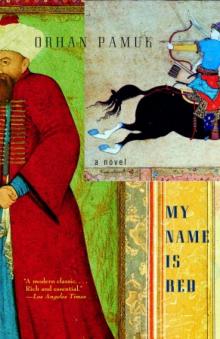 My Name is Red
My Name is Red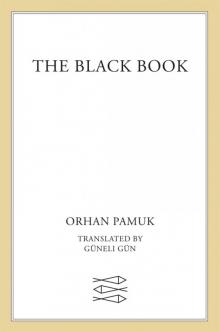 The Black Book
The Black Book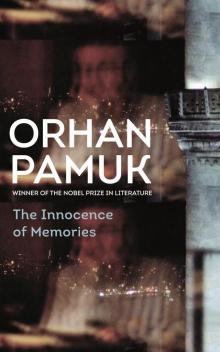 The Innocence of Memories
The Innocence of Memories The White Castle
The White Castle Other Colors
Other Colors Silent House
Silent House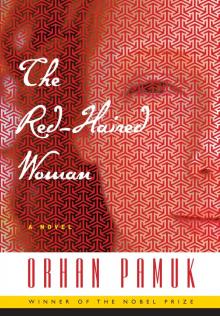 The Red-Haired Woman
The Red-Haired Woman The Museum of Innocence
The Museum of Innocence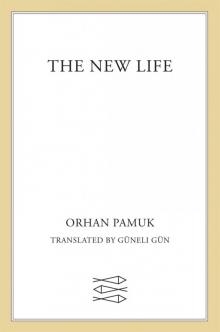 The New Life
The New Life Istanbul
Istanbul